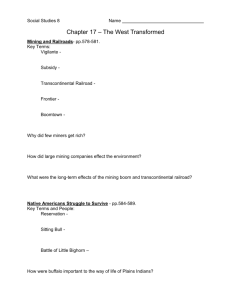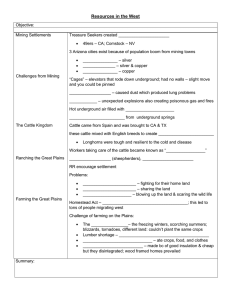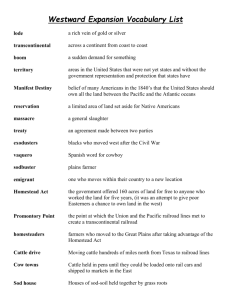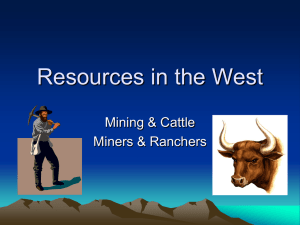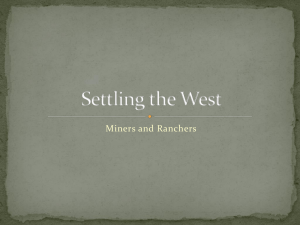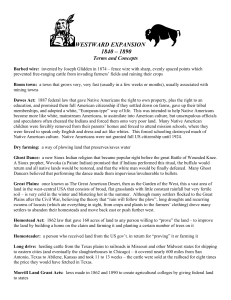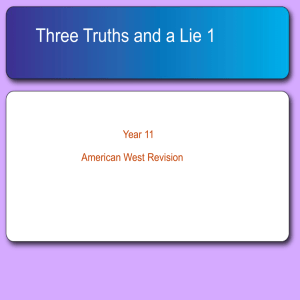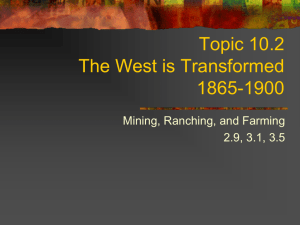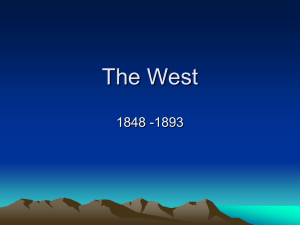ch.8 review ____ 1. Early prospectors would extract shallow
advertisement
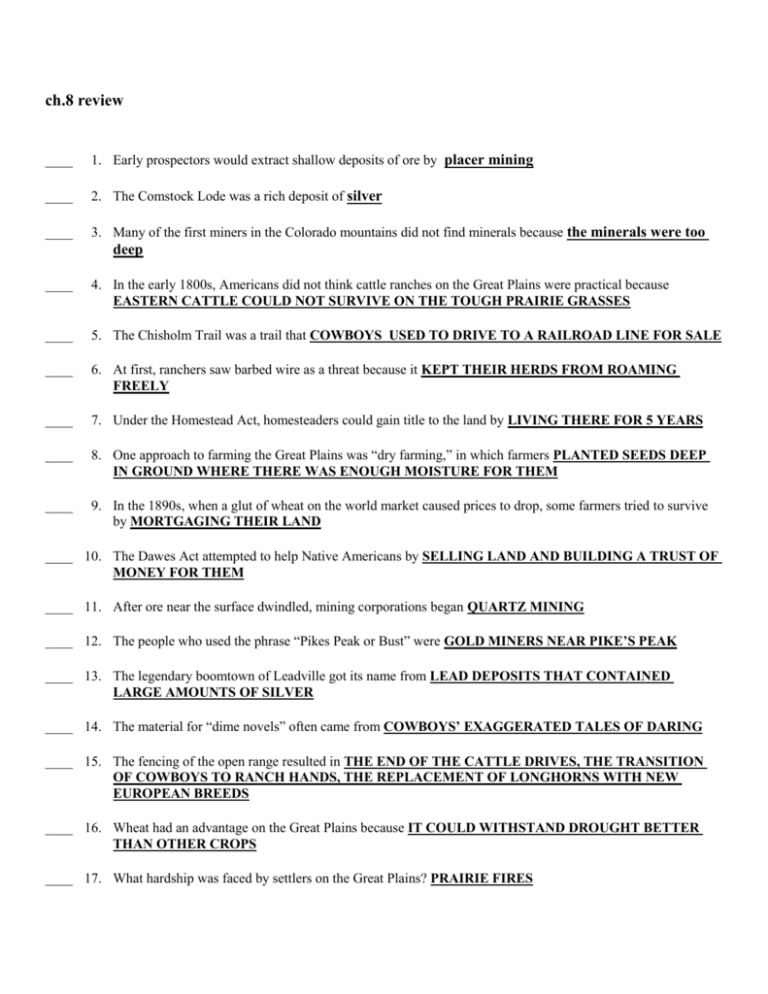
ch.8 review ____ 1. Early prospectors would extract shallow deposits of ore by placer mining ____ 2. The Comstock Lode was a rich deposit of silver ____ 3. Many of the first miners in the Colorado mountains did not find minerals because the minerals were too deep ____ 4. In the early 1800s, Americans did not think cattle ranches on the Great Plains were practical because EASTERN CATTLE COULD NOT SURVIVE ON THE TOUGH PRAIRIE GRASSES ____ 5. The Chisholm Trail was a trail that COWBOYS USED TO DRIVE TO A RAILROAD LINE FOR SALE ____ 6. At first, ranchers saw barbed wire as a threat because it KEPT THEIR HERDS FROM ROAMING FREELY ____ 7. Under the Homestead Act, homesteaders could gain title to the land by LIVING THERE FOR 5 YEARS ____ 8. One approach to farming the Great Plains was “dry farming,” in which farmers PLANTED SEEDS DEEP IN GROUND WHERE THERE WAS ENOUGH MOISTURE FOR THEM ____ 9. In the 1890s, when a glut of wheat on the world market caused prices to drop, some farmers tried to survive by MORTGAGING THEIR LAND ____ 10. The Dawes Act attempted to help Native Americans by SELLING LAND AND BUILDING A TRUST OF MONEY FOR THEM ____ 11. After ore near the surface dwindled, mining corporations began QUARTZ MINING ____ 12. The people who used the phrase “Pikes Peak or Bust” were GOLD MINERS NEAR PIKE’S PEAK ____ 13. The legendary boomtown of Leadville got its name from LEAD DEPOSITS THAT CONTAINED LARGE AMOUNTS OF SILVER ____ 14. The material for “dime novels” often came from COWBOYS’ EXAGGERATED TALES OF DARING ____ 15. The fencing of the open range resulted in THE END OF THE CATTLE DRIVES, THE TRANSITION OF COWBOYS TO RANCH HANDS, THE REPLACEMENT OF LONGHORNS WITH NEW EUROPEAN BREEDS ____ 16. Wheat had an advantage on the Great Plains because IT COULD WITHSTAND DROUGHT BETTER THAN OTHER CROPS ____ 17. What hardship was faced by settlers on the Great Plains? PRAIRIE FIRES ____ 18. Before the Sand Creek Massacre, the Cheyenne had come to Camp Lyon to NEGOTIATE ____ 19. The army encouraged white hunters to kill buffalo to FORCE NATIVE AMERICANS ONTO RESERVATIONS ____ 20. The confrontation at Wounded Knee occurred because the chief’s followers CONTINUED TO PERFORM A RITUAL 21. The Comstock strike turned the town of VIRGINIA CITY, Nevada, into a boomtown. 22. The "rising room" in a Nevada boomtown hotel was the West's first ELEVATOR. 23. In boomtowns, where law enforcement was scarce, self-appointed volunteers sometimes formed VIGILANCE committees to track down and punish wrongdoers. 24. The Texas LONGHORN was a breed of cattle descended from Spanish cattle that had been brought to Mexico two centuries earlier. 25. Ranchers used BRANDS to distinguish their cattle from those in the herd owned by other ranchers. 26. A HOMESTEAD was a tract of public land available for settlement. 27. The people who settled in the Great Plains and plowed the soil there were called SODBUSTER. 28. Large wheat farms were called BONZANZA farms because they often brought their owners big profits. 29. For centuries, the BUFFALO was the main source of food for most Native American nations on the Great Plains. 30. The GHOST Dance was a Native American ritual that celebrated a hoped-for day of reckoning.
